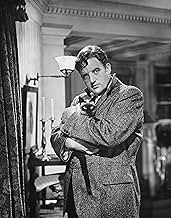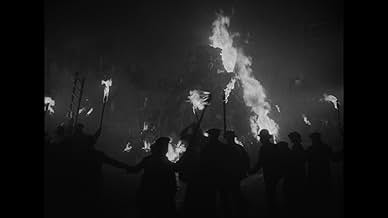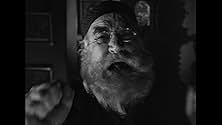IMDb RATING
7.3/10
4.4K
YOUR RATING
A promising classical musician finds his life poisoned by a music hall dancer -- and by the strange gaps in his memory.A promising classical musician finds his life poisoned by a music hall dancer -- and by the strange gaps in his memory.A promising classical musician finds his life poisoned by a music hall dancer -- and by the strange gaps in his memory.
- Director
- Writers
- Stars
- Awards
- 2 wins total
Harry Allen
- Pot Man
- (uncredited)
Radford Allen
- Boy
- (uncredited)
Jimmy Aubrey
- Drunk
- (uncredited)
J.W. Austin
- Det. Insp. King
- (uncredited)
Brandon Beach
- Concertgoer
- (uncredited)
Wilson Benge
- Waiter
- (uncredited)
Frank Benson
- Newsman
- (uncredited)
Arthur Berkeley
- Pub Patron
- (uncredited)
Ted Billings
- Pub Patron
- (uncredited)
Lulu Mae Bohrman
- Concertgoer
- (uncredited)
Clifford Brooke
- Gas Company Watchman
- (uncredited)
Bob Burns
- Concertgoer
- (uncredited)
- Director
- Writers
- All cast & crew
- Production, box office & more at IMDbPro
Featured reviews
Famous Composer George Harvey Bone (Laird Cregar) turns from gentle giant to violent murdering psychopath when prompted by certain sounds - he can then recall nothing. Into his life comes tricky nightclub singer Linda Darnell who uses him to write popular songs that she can use / sell - he becomes bewitched.
Glorious piece of Grand Guignol evoking Jekyll and Hyde and a foggy, chestnut roasting London. The story is well played out and full of memorable scenes without going over the top. At the centre of it all is Cregar, hugely impressive as both a sweet, gentle man and an evil killer. He is well supported by Darnell who is good at being bad and George Sanders as the psychiatrist / amateur detective. Bernard Herrman's score is one of his best and used well throughout, but particularly in the climactic scene which is truly terrific.
Glorious piece of Grand Guignol evoking Jekyll and Hyde and a foggy, chestnut roasting London. The story is well played out and full of memorable scenes without going over the top. At the centre of it all is Cregar, hugely impressive as both a sweet, gentle man and an evil killer. He is well supported by Darnell who is good at being bad and George Sanders as the psychiatrist / amateur detective. Bernard Herrman's score is one of his best and used well throughout, but particularly in the climactic scene which is truly terrific.
HANGOVER SQUARE is one of my favorite films in which LAIRD CREGAR appeared--in fact, his last before a crash diet ruined his health and led to his death at age 28. Seeing him in this film, made me realize what a wonderful Rochester he would have made in '44's JANE EYRE. He had the kind of presence that looms over every frame of this film, even when he's not actually in the scene.
He's a troubled musician who reacts violently when he hears certain discordant sounds. LINDA DARNELL makes an attractive romantic presence in her period costuming (it takes place in Victorian London), and GEORGE SANDERS does a nice job as a doctor (a good guy for a change).
The scenes that stand out are Cregar climbing the ladder of a bonfire to dispose of his latest victim and the finale where he's playing the piano in a deserted building as the flames spread around him--all the while Bernard Herrmann's score is making an impact.
It's a delicious LAIRD CREGAR performance and a fitting finale to his short but illustrious career. It's somewhat similar to a previous film, THE LODGER, another Victorian thriller he did with Merle Oberon.
He's a troubled musician who reacts violently when he hears certain discordant sounds. LINDA DARNELL makes an attractive romantic presence in her period costuming (it takes place in Victorian London), and GEORGE SANDERS does a nice job as a doctor (a good guy for a change).
The scenes that stand out are Cregar climbing the ladder of a bonfire to dispose of his latest victim and the finale where he's playing the piano in a deserted building as the flames spread around him--all the while Bernard Herrmann's score is making an impact.
It's a delicious LAIRD CREGAR performance and a fitting finale to his short but illustrious career. It's somewhat similar to a previous film, THE LODGER, another Victorian thriller he did with Merle Oberon.
Though it's virtually impossible to find a copy of this buried treasure, it's worth a fair bit of digging. (The film is available on tape only, in mediocre print condition, and carried by only a handful of rental stores in the country.) It's not a brilliant film, but it has some virtuoso camera work that one would never expect to find in a filmi of its type. (Watch for the camera shot in the first seconds of the film that swings quickly up from a crowded street, through a window, and into a tight
closeup of the face of a man about to be killed - very impressive.) This is the type of film one can imagine Martin Scorsese taking an interest in - a skillful, craftsmanlike film overlooked by all but a few film buffs. The performances as well, especially Laird Cregar's, are terrific.
closeup of the face of a man about to be killed - very impressive.) This is the type of film one can imagine Martin Scorsese taking an interest in - a skillful, craftsmanlike film overlooked by all but a few film buffs. The performances as well, especially Laird Cregar's, are terrific.
Well worth watching, if you can find it. Cregar is excellent as the concert pianist tortured by obsession with a woman, and what it leads to. Moody, urgent (all the more so in black and white), with mounting suspense and tension. Lush Bernard Hermann score that expresses his anguish. Bonfire scene is gripping.
In this variation on the Jekyll and Hyde story, a composer has sporadic episodes where his subconscious takes over and he has no recollections of his actions during these lapses when he comes to. This film reunites Cregar and Sanders with director Brahm from "The Lodger" the previous year, and, like the earlier film, it is visually opulent but the story is less than compelling. Cregar gives perhaps his best performance in this, his final film before his untimely death at age 31 just as he was coming into his own. Darnell, who would also die young, is a sensuous presence as the object of his obsession. Herrmann provides an impressive score, including a piano concerto used in the finale.
Did you know
- TriviaIn the book "A Heart at Fire's Center: The Life and Music of Bernard Herrmann," director John Brahm said this about the concerto scene: "For a long time, I had been dissatisfied with the photography of music in films. Musicians themselves are uninteresting; it is what they play that should be photographed. I myself could not read a note of music, but when Herrmann came and saw the finished film he could not believe it. I had photographed his music."
- GoofsThe title of Patrick Hamilton's novel, 'Hangover Square', is a play on words based on 'Hanover Square'. It is not meant to be Bone's actual address as it is in the film version, where a street sign marked 'Hangover Square' is seen.
- Quotes
[first title card]
Title Card: This is the story of George Harvey Bone who resided at number 12, Hangover Square, London, S.W. in the early part of the Twentieth Century. The British Catalogue of Music lists him as a Distinguished Composer~~~
- Crazy creditsOpening credits: This is the story of George Harvey Bone who resided at number 12, Hangover Square, London, S.W. in the early part of the Twentieth Century. The British Catalogue of Music lists him as a Distinguished Composer~~~
- ConnectionsFeatured in Biography: Linda Darnell: Hollywood's Fallen Angel (1999)
- SoundtracksHave You Seen Joe?
(uncredited)
Music by Lionel Newman
Lyrics by Charles Henderson
Performed by Kay St. Germain Wells
[Netta (Linda Darnell) sings the song at the bar hall in her opening performance]
Details
- Release date
- Country of origin
- Languages
- Also known as
- Mörkrets ängel
- Filming locations
- Production company
- See more company credits at IMDbPro
Box office
- Budget
- $1,154,000 (estimated)
- Runtime1 hour 17 minutes
- Color
- Aspect ratio
- 1.37 : 1
Contribute to this page
Suggest an edit or add missing content































